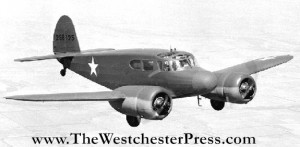How does Amazon sales ranking relate to monthly book sales?
Nobody knows. Except maybe Amazon, and they aren’t telling.
But some very determined, diligent, and intelligent people have taken on the challenge of trying to find an answer – and they’ve posted some tools and guides.
They are mostly authors who have self published books for sale on Amazon.com and have found, as I have found, that there is no way to independently verify how many of our books have sold on Amazon.com. We have to settle for Amazon’s report each month… and be patient with the fact that some kinds of sales have several weeks delay in posting on that report. (I should say here that this whole situation isn’t much different from having to rely on a traditional publisher for a report of monthly sales – and in those cases, the delay can be much longer… but still… inquiring authors want to know.)
At first I wanted to know because I was concerned that maybe I was selling hundreds of thousands of books but only getting paid for about ten. But once I cruised the reports and sites and saw the general overviews of Amazon book ranking translated to estimated overall monthly sales, I accepted reality, (not really, but I pretended to)… and Amazon’s reporting.
Then I wanted to know how many books other authors were selling, particularly my favorite authors or some of the successful self published authors I’ve been following.
Amazon.com shows a book sales ranking as Amazon Best Seller Rank, under Product Details” on the book’s Amazon.com listing – you scroll down past “Description,” past “Customers Viewed This Item Also Viewed,” past “Editorial Reivews,” and you are there.
The rank changes every day, depending on your own book sales, and other people’s book sales. It is a complex algorithm (or a bingo cage at Amazon headquarters) and it can be very volatile.
The most interesting thing about the ranking is the general number range; like less than 100,000 or more than one million. All the info I’ve gathered about this number range is from people observing on their own, not from Amazon.com’s CFO, but I’ve done enough of my own double checking (on my own numbers and through other sources) that I think it is somewhat accurate.
In general, if your ranking is less than 100,000, you are probably selling several books every month. If your ranking is more than one million – meaning that there are at least one million better selling books on Amazon.com than your book… you are probably only selling a couple of books a month (or less), or haven’t sold a book in a couple of weeks (or more) – and you should probably stop checking your ranking and start doing more marketing.
But sell two books in two weeks and watch that ranking climb! For one day.
Another resource, which is far more iffy, is a site that offers you a chance to enter your actual sales ranking and see what you actually might be selling monthly or daily. I found this calculator a little buggy – make sure you zero it all out and try it several times with slightly variable numbers. But it did show me numbers that made sense on my own ranking, and some test rankings where I already knew the monthly sales of other books.
There are also sites that helpfully offer, for free, to track your Amazon.com sales ranking; presumably so that you can have an average to plug into the calculator.
For me, having yet another numerical measure in my life is unappealing, especially because it does not generally make it under 100,000 on any given day, so I am satisfied with the occasional overview.
I could toss it into my goal pile, but instead, I’m going to get ready to release my grandfather’s aviation biography and see what happens to THAT sales ranking… wahOOOOOO!










